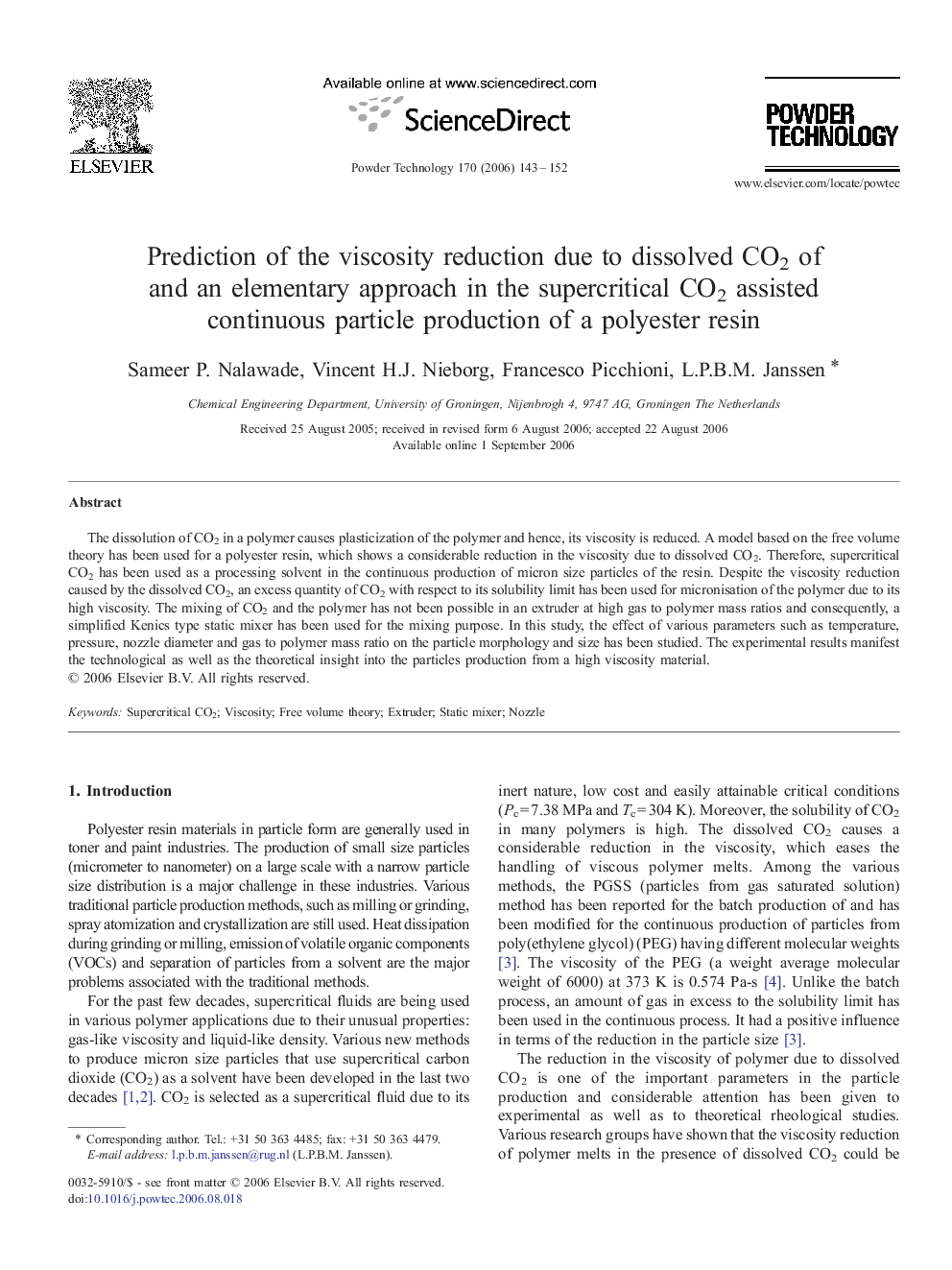| Article ID | Journal | Published Year | Pages | File Type |
|---|---|---|---|---|
| 239324 | Powder Technology | 2006 | 10 Pages |
The dissolution of CO2 in a polymer causes plasticization of the polymer and hence, its viscosity is reduced. A model based on the free volume theory has been used for a polyester resin, which shows a considerable reduction in the viscosity due to dissolved CO2. Therefore, supercritical CO2 has been used as a processing solvent in the continuous production of micron size particles of the resin. Despite the viscosity reduction caused by the dissolved CO2, an excess quantity of CO2 with respect to its solubility limit has been used for micronisation of the polymer due to its high viscosity. The mixing of CO2 and the polymer has not been possible in an extruder at high gas to polymer mass ratios and consequently, a simplified Kenics type static mixer has been used for the mixing purpose. In this study, the effect of various parameters such as temperature, pressure, nozzle diameter and gas to polymer mass ratio on the particle morphology and size has been studied. The experimental results manifest the technological as well as the theoretical insight into the particles production from a high viscosity material.
Graphical abstractSupercritical CO2 is used as a processing solvent in the continuous production of micron size particles of a polyester resin. Despite the viscosity reduction caused by the dissolved CO2, an excess quantity of gas has to be used with respect to its solubility. The mixing of CO2 and the polymer has been achieved by using a simplified Kenics type static mixer.Figure optionsDownload full-size imageDownload as PowerPoint slide
